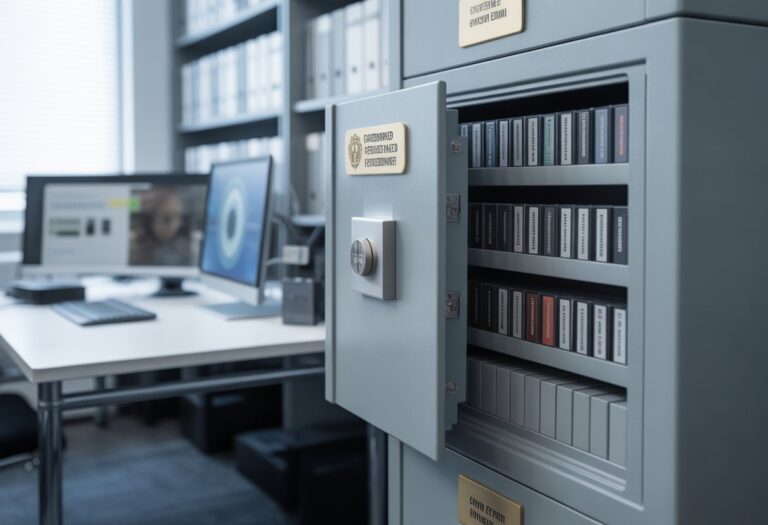Secure Frame Made Simple: Easy Steps to Protect Your Data
Secureframe helps businesses manage security and compliance more easily by automating many complex tasks. It streamlines the process of meeting over 30 compliance frameworks using automated tools for evidence collection and risk management. This makes it easier for companies to stay secure and build trust with their customers.
Many well-known companies rely on Secureframe to keep their data safe and maintain global security standards. It connects with hundreds of other tools and offers continuous monitoring to catch possible issues before they become big problems.
With Secureframe, businesses don’t have to handle security checks manually, saving time and reducing errors. Its automation and comprehensive features make it a useful choice for companies looking to grow without the hassle of heavy compliance work.
What Is Secureframe and How Does It Improve Security?

Secureframe helps businesses manage compliance and improve their security posture through automation and continuous oversight. It streamlines many tasks that usually take up a lot of time, making it easier to follow security rules and reduce risks. The platform also provides tools to monitor devices and enforce security controls consistently.
Core Features and Capabilities
Secureframe offers features that focus on simplifying compliance with standards like SOC 2, ISO 27001, HIPAA, and GDPR. It automates evidence collection so companies can gather proof of security practices quickly. Its policy management tool helps build personalized security policies, making it easier to address specific business needs.
The platform integrates with over 300 other services such as AWS, Google Cloud, Okta, GitHub, and G Suite. These connections help assess security settings and track risk automatically. Secureframe also provides vendor risk management to monitor third-party security, which is important for building trust with clients. Lastly, its onboarding process is supported by a dedicated customer success manager to ensure smooth setup.
Continuous Monitoring and Automation
Continuous monitoring is a key part of how Secureframe improves security. The platform checks systems and controls regularly to catch problems early. Automated tests run frequently to find failing controls and give clear guidance on how to fix them.
Secureframe uses AI-powered automation to handle many manual tasks. This includes updating security policies and managing evidence for audits. Such automation saves time and lowers the chance of human error. It also supports automatic responses to security questionnaires and requests for proposals (RFPs), helping businesses close deals faster.
The support team promises quick replies, usually within one business day, to keep users on track with their security goals. This proactive approach helps maintain compliance over time without extra effort.
Security Controls and Device Management
Secureframe includes tools to manage security controls across a company’s devices. It monitors infrastructure for vulnerabilities and enforces password policies, including password policy checks for stronger access security, helping to reduce weak points.
The Secureframe agent installed on devices collects data while being easy to uninstall if needed. It runs quietly in the background, keeping systems safe without interfering with daily operations. The platform also tracks background checks and other security measures that contribute to overall compliance.
By unifying device management with risk assessment and policy enforcement, Secureframe strengthens security on every level. This thorough management helps organizations stay compliant and protect sensitive information effectively.
Frameworks, Standards, and Integrations With Secureframe
Secureframe simplifies managing complex compliance and privacy requirements. It supports many important security frameworks and privacy standards, helping companies track their audit readiness. It also connects with many tools and allows custom frameworks to fit unique business needs.
Supported Compliance Frameworks
Secureframe covers a wide range of compliance frameworks used by organizations of all sizes. It supports SOC 2, ISO 27001 (including the 2022 update), HIPAA, PCI DSS, FedRAMP, CMMC, Cyber Essentials, and many federal standards like NIST 800-53 and NIST 800-171.
By mapping controls to each specific framework, it helps automate evidence collection and control testing. This eases the workload during audits. It also supports financial frameworks such as SOX ITGC and schedules updates to handle changes in the rules. Users can mark irrelevant requirements as N/A, keeping the process clear and focused.
Privacy Standards and Data Protection
Secureframe includes key privacy and data protection frameworks like GDPR, CCPA, NYDFS 500/NYCRR, and ISO 27701 for privacy information management. It supports rules like the FTC Safeguards Rule and helps with compliance related to patient privacy laws.
The tool tracks policies, controls, and risk management related to personal data protection and cross-border regulations. This reduces risks tied to mishandling sensitive information. Privacy teams find its checklist templates and automated evidence gathering useful to maintain continuous compliance and show proof to regulators.
Integrations and Custom Frameworks
Secureframe integrates with over 300 systems, including cloud platforms, security tools, identity providers, and HR systems. This rich connectivity allows automatic evidence extraction, saving time on manual data collection.
Users can also create custom frameworks unique to their business or industry. This is valuable for tracking compliance with less common rules or internal policies. Secureframe’s API supports secure data exchange, helping teams build tailored audit workflows and maintain detailed risk registers in one place.
The platform’s integration with vendor and employee access management improves global security visibility and control. This makes it easier to manage compliance across many business units and locations.


